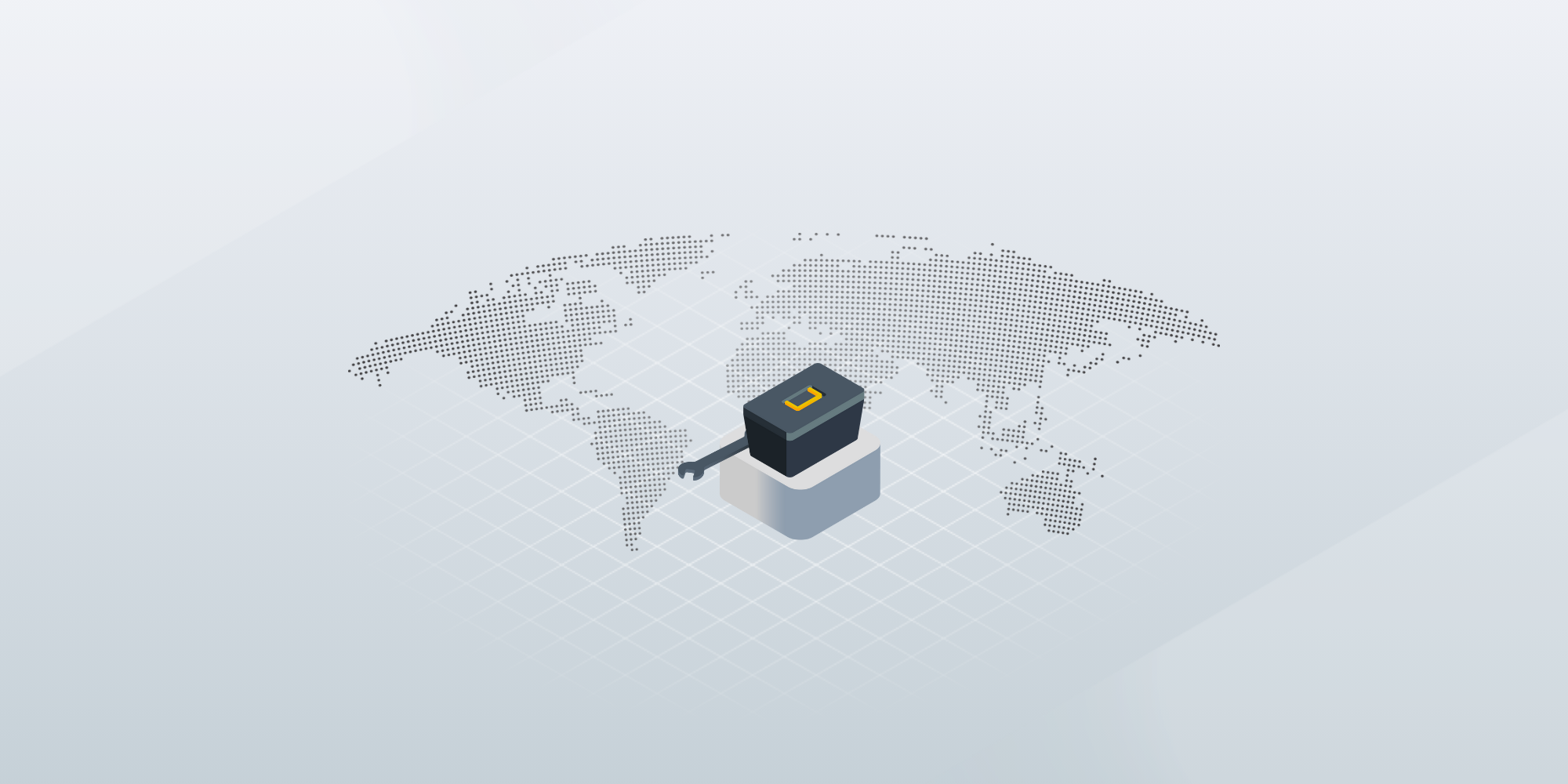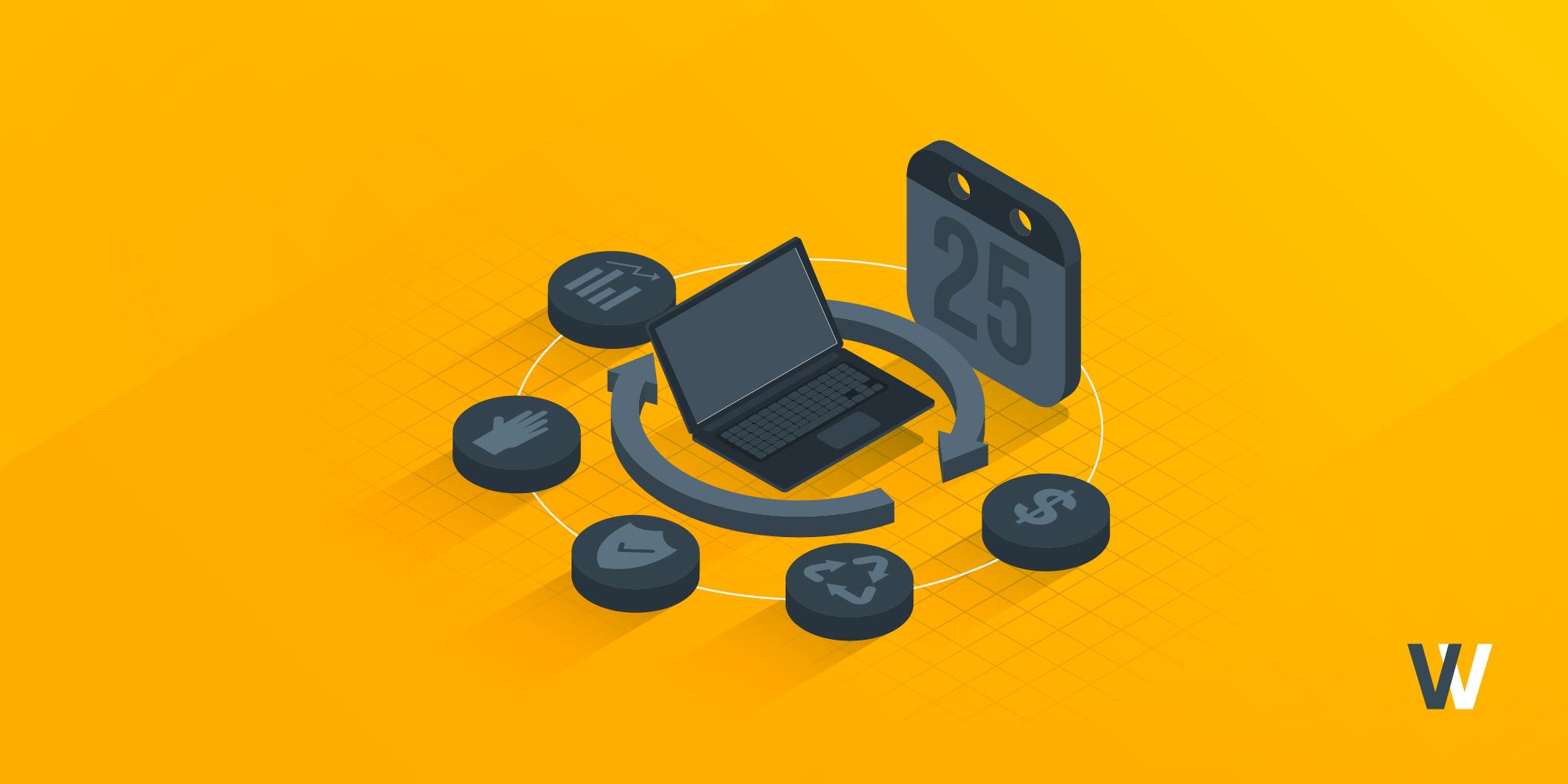Discover the best IT asset tracking tools for distributed teams
 GroWrk Team
GroWrk Team
Tracking and managing IT equipment across multiple locations is one of the biggest challenges for modern organizations. Without a reliable IT asset tracking tool, devices can slip through the cracks, data becomes unreliable, and maintenance schedules are often missed, leading to downtime and unnecessary costs.
According to the Flexera 2024 State of ITAM Report, 53% of IT teams struggle to maintain accurate visibility into their assets, and 22% report that audit costs have exceeded $5 million in the past three years. These figures underscore the importance of having the right asset management software to maintain control and compliance.
An effective asset management solution provides a centralized platform for tracking and managing all your assets, from laptops and mobile devices to network hardware and digital assets. With real-time insights, automated inventory tracking, and streamlined maintenance scheduling, the right asset tracking software helps IT teams:
-
Maintain accurate asset data across multiple sites and users.
-
Extend the asset lifecycle through proactive maintenance.
-
Improve compliance and audit readiness with reliable asset information.
For IT and operations leaders, choosing the best asset management tool isn’t just about tracking devices—it’s about achieving complete asset visibility and improving operational efficiency across the entire organization.
Key takeaways
-
A reliable IT asset tracking tool provides complete asset visibility and accurate asset data across all devices and locations.
-
Modern asset management software automates inventory tracking, maintenance, and compliance tasks to save time and reduce unnecessary costs.
-
An effective asset management solution supports long-term asset lifecycle management, helping IT teams maintain control and improve operational efficiency.
Understanding IT asset tracking
![]()
Asset tracking is the process of monitoring and managing physical and digital assets throughout their lifecycle, from acquisition to retirement. In IT environments, this includes laptops, desktops, peripherals, network devices, and other equipment essential to daily operations.
An effective IT asset tracking system utilizes technologies such as barcodes, RFID tags, or QR codes to record and update asset information in real-time. When paired with modern asset management software, these tools provide centralized visibility, enabling teams to track location, ownership, maintenance history, and usage patterns from a single dashboard.
Accurate asset data enables IT teams to make informed decisions, such as when to redeploy, repair, or replace equipment, thereby reducing unnecessary costs and enhancing operational efficiency. This visibility is crucial for asset lifecycle management, enabling organizations to maintain compliance, streamline audits, and prevent equipment loss.
For example, a company managing hundreds of remote employee devices can use asset tracking software to assign assets, monitor their status, and schedule maintenance automatically. This minimizes manual errors and ensures that every laptop or monitor is accounted for across the entire organization.
Benefits of asset tracking
![]()
A well-implemented IT asset tracking tool gives organizations the foundation for smarter, more efficient asset management. By consolidating all asset data in one centralized platform, companies can monitor their IT assets in real time, automate inventory tracking, and reduce the costs associated with manual processes.
Key benefits include:
-
Complete asset visibility: Gain a unified view of all IT assets, equipment, and digital assets across multiple locations, departments, and users.
-
Accurate asset data: Ensure every asset record is up to date, improving decision-making for maintenance, budgeting, and asset utilization.
-
Automated inventory tracking: Replace manual spreadsheets with real-time asset tracking software that updates automatically as assets move or change hands.
-
Lower operational costs: Identify unused or duplicate assets, prevent unnecessary purchases, and recover misplaced devices to save time and money.
-
Improved compliance management: Maintain accurate records for audits, contract management, and warranty tracking to avoid penalties or data discrepancies.
-
Optimized asset lifecycle management: Extend the asset lifecycle by scheduling preventive maintenance, managing maintenance tasks, and tracking replacements.
-
Increased operational efficiency: Streamline workflows, improve team coordination, and simplify reporting through integrated asset management solutions.
When managed through a reliable asset tracking system, organizations can maintain tighter control over resources, reduce unnecessary expenses, and ensure every device contributes to long-term operational success.
Features of asset tracking
![]()
Modern asset tracking software provides the tools organizations need to gain complete asset visibility, maintain accurate asset data, and simplify inventory tracking across every location. These features form the foundation of an effective asset management solution, helping IT teams save time, prevent unnecessary costs, and optimize the asset lifecycle.
Key features include:
-
Barcode and QR code scanning: Enables quick identification and updates for each device, reducing manual entry errors and speeding up inventory checks.
-
Real-time asset tracking: Provides live visibility into asset location, user assignment, and condition through a centralized platform, improving accountability.
-
Automated asset discovery: Detects and catalogs connected devices automatically, ensuring no asset goes untracked.
-
Maintenance scheduling: Sends alerts for upcoming maintenance tasks, extending asset lifespan and minimizing downtime.
-
Audit trails and detailed reports: Keeps a full record of asset movements, changes, and history, simplifying compliance audits and reporting.
-
Mobile app access: Allows teams to track, assign, and update assets from anywhere, supporting hybrid and remote IT operations.
-
Custom reports: Offers insights into asset utilization, costs, and performance, helping identify areas for improvement and unnecessary expenses.
-
Integration capabilities: Connects seamlessly with accounting software, contract management systems, and HR tools for unified, accurate asset data.
Together, these capabilities transform how organizations track assets, manage maintenance, and make informed decisions about their IT investments, ensuring a more efficient, compliant, and cost-effective asset management process.
Asset management solutions
Choosing the right IT asset tracking tool depends on your organization’s scale, asset types, and operational goals. The following asset management software solutions represent some of the most reliable options for tracking hardware, maintaining accurate asset data, and improving overall asset lifecycle management.
|
Solution |
Key Features |
Best For |
Limitations |
|---|---|---|---|
|
Global IT asset tracking and lifecycle management; centralized platform for hardware provisioning, shipping, recovery, and maintenance; real-time visibility and audit trails; integrates with HR and IT systems. |
Enterprises managing distributed teams and devices across multiple locations. |
Primarily focused on IT assets (not general facilities or non-IT equipment). |
|
|
Cloud-based asset tracking software with barcode scanning, mobile app, and custom fields for asset records. |
Mid-sized businesses needing flexibility and on-the-go asset updates. |
Limited workflow automation compared to enterprise-grade tools. |
|
|
Open-source IT asset management tool for tracking hardware, software licenses, and user assignments. |
IT teams seeking a budget-friendly, customizable system. |
Requires manual setup and self-hosting for advanced features. |
|
|
Complete IT asset management solution with discovery tools, license tracking, and configuration management database (CMDB). |
Organizations needing deep visibility into network devices and software. |
Interface can feel dated and requires technical expertise for setup. |
|
|
Unified platform for asset discovery, software usage, and configuration tracking. |
IT departments focused on compliance and software license management. |
Pricing not publicly listed; best for mid-to-large enterprises. |
|
|
IT service management (ITSM) platform with built-in asset tracking and maintenance scheduling. |
Companies seeking a combined helpdesk and asset tracking system. |
May be overkill for smaller teams focused solely on asset tracking. |
|
|
Enterprise-grade platform for full asset lifecycle management, contract renewals, and compliance tracking. |
Large enterprises with complex IT ecosystems. |
High implementation cost and steep learning curve. |
|
|
Free asset tracking tool with barcode scanning and cloud storage. |
Small businesses needing a simple and affordable solution. |
Lacks advanced reporting and integrations. |
|
|
ITSM and asset management software with automated discovery and reporting. |
IT teams managing hybrid environments of hardware and software. |
Limited customization and scalability compared to other enterprise tools. |
Choosing the right asset tracking tool
![]()
Selecting the right IT asset tracking tool begins with understanding your organization’s unique requirements, including the number of devices, locations, and integrations required. A well-matched solution can streamline asset management, enhance visibility, and eliminate unnecessary costs associated with manual oversight.
Here are key factors to consider:
-
Ease of use: Choose asset tracking software with an intuitive, user-friendly interface and a low learning curve so IT teams can start managing IT assets quickly.
-
Scalability: Ensure the system can handle multiple assets, users, and job sites as your organization expands.
-
Integration capabilities: Look for compatibility with existing tools such as accounting software, contract management systems, and HR platforms.
-
Automation features: Prioritize tools that automate inventory tracking, maintenance scheduling, and asset discovery for greater efficiency.
-
Reporting and analytics: Opt for solutions that generate custom reports, track asset utilization, and monitor historical data for performance insights.
-
Mobile and remote access: A mobile app or cloud-based dashboard allows teams to track assets from multiple locations and update records in real time.
-
Security and compliance: Verify that the software includes robust access controls, audit trails, and compliance management features to protect asset data.
The best asset management solution is one that aligns with your operational structure, scales with your growth, and provides the visibility needed to make informed decisions throughout the asset lifecycle.
Implementing asset tracking
![]()
Once the right asset tracking software has been selected, successful implementation depends on planning, data accuracy, and user adoption. Proper setup ensures your organization gains full value from its asset management solution while maintaining visibility across all IT assets.
Key steps for implementation include:
-
Centralize existing data: A spreadsheet import of all asset information from Excel sheets or legacy systems into your new asset tracking system to establish a single source of truth.
-
Standardize asset categories: Define clear naming conventions, asset types, and ownership fields to ensure accurate asset data across teams.
-
Set up user accounts and permissions: Assign appropriate access levels to IT admins, procurement, and finance teams for better control.
-
Automate tracking and maintenance: Enable features for inventory tracking, maintenance scheduling, and contract renewals to reduce manual processes.
-
Train team members: Provide onboarding sessions to ensure users understand how to track assets, run reports, and update asset data correctly.
-
Monitor and refine processes: Review asset utilization and maintenance history regularly to identify opportunities for improvement in asset lifecycle management.
With the right foundation, an asset management solution becomes more than just a tracking tool; it transforms how your organization manages, secures, and optimizes its IT investments.
Best practices for asset tracking
![]()
Consistent processes and accurate data are the backbone of effective IT asset management. Even the best asset tracking software can lose its value without proper maintenance, clear policies, and ongoing optimization. Implementing these best practices helps ensure your organization maintains full asset visibility and extends the asset lifecycle of every device.
Key best practices include:
-
Keep asset data up to date: Regularly review and update asset information such as location, ownership, and condition to maintain accurate asset data.
-
Perform routine maintenance tasks: Schedule inspections, updates, and replacements to maximize uptime and reduce unexpected failures.
-
Establish clear policies: Create company-wide procedures for assigning, retiring, and disposing of IT assets to prevent loss or confusion.
-
Conduct regular audits: Perform periodic checks to verify asset data accuracy, ensure compliance, and identify underused or missing assets.
-
Monitor asset utilization: Analyze usage data to improve resource allocation and eliminate unnecessary expenses.
-
Integrate compliance tracking: Use built-in audit trails and compliance management tools to simplify audit preparation and meet internal or external standards.
-
Train employees consistently: Provide refresher sessions so team members understand how to update and manage assets correctly across multiple locations.
Following these best practices ensures your asset tracking system remains accurate, efficient, and aligned with your organization’s operational and compliance goals.
Asset lifecycle management
Every device, from laptops to network equipment, has a defined lifespan. Effective asset lifecycle management ensures that each IT asset delivers maximum value before being retired or replaced. Using asset tracking software, organizations can monitor assets from acquisition through disposal, maintaining accurate asset data and optimizing overall asset utilization.
Key stages of the asset lifecycle include:
-
Acquisition: Record new IT assets in your asset management solution as soon as they are purchased or deployed. Assign each asset to a user, department, or location to establish ownership and accountability.
-
Deployment: Use your asset tracking system to log installation dates, configurations, and warranty information for better traceability.
-
Maintenance: Schedule updates, repairs, and performance checks to extend equipment lifespan and ensure consistent functionality.
-
Utilization: Monitor how each asset is used across multiple locations to identify underperforming or redundant resources.
-
Audit and compliance: Maintain accurate asset data and maintenance history for audits, license renewals, and compliance management.
-
Retirement and disposal: Follow standardized offboarding and asset disposition procedures to ensure devices are securely wiped, recycled, or repurposed responsibly.
When managed effectively, asset lifecycle management helps organizations reduce waste, control costs, and maintain a secure, compliant, and high-performing IT environment.
Why choose GroWrk for IT asset tracking
Managing IT assets across global teams doesn’t have to be complex. GroWrk simplifies every stage of asset lifecycle management through an all-in-one asset management solution built for distributed workforces. From provisioning and tracking to recovery and recycling, GroWrk gives IT teams full visibility and control over their global hardware infrastructure.
GroWrk offers:
-
Centralized platform: A single dashboard for managing all your assets, hardware, peripherals, and digital devices with complete asset visibility and accurate asset data across every location.
-
Global coverage and logistics: Operates in over 150 countries, managing device deployment, retrieval, and recycling through trusted regional partners.
-
End-to-end lifecycle management: Handles everything from new device setup to secure offboarding and sustainable asset disposal, with automated audit trails for compliance.
-
Automation and integrations: Connects seamlessly with HR platforms, ITSM tools, and accounting software to synchronize asset data and reduce manual processes.
-
Security and compliance: SOC 2 Type 2 certified to protect sensitive asset and user data while maintaining enterprise-grade compliance management.
-
Sustainability built-in: Offers device recovery, refurbishment, and responsible recycling to reduce waste and extend the asset lifecycle.
-
Flexible and transparent pricing: Offers subscription and pay-as-you-go options, such as GroWrk A La Carte, so organizations can scale globally without high upfront costs.
-
AI-powered and human support: Combines intelligent automation with dedicated account managers for real-time assistance and personalized oversight.
GroWrk helps IT and operations teams track, deploy, and recover devices anywhere in the world, all through one secure, automated platform designed for modern global work.
Request a demo today!
FAQ
What is an IT asset tracking tool?
An IT asset tracking tool is software that helps organizations monitor, manage, and maintain all IT assets, including laptops, monitors, peripherals, and other hardware, throughout their lifecycle. It centralizes asset data, tracks locations and users, and automates maintenance and compliance tasks.
How does asset tracking software work?
Asset tracking software uses technologies such as barcodes, QR codes, and RFID tags to record and update asset information in real time. These systems often include cloud dashboards and mobile apps that let IT teams track assets across multiple locations, schedule maintenance tasks, and generate audit trails for compliance.
What are the main benefits of asset management software?
The best asset management solutions help organizations reduce unnecessary costs, prevent loss, and extend the asset lifecycle. They provide accurate asset data, automate inventory tracking, improve compliance management, and support smarter budgeting and resource allocation.
Can asset tracking software integrate with other tools?
Yes. Modern asset management software integrates with accounting software, HR systems, ITSM tools, and contract management platforms. These integrations ensure that accurate asset data flows seamlessly between systems, reducing the need for manual updates.
What features should I look for in an asset tracking system?
Look for features like barcode or QR scanning, real-time tracking, automated asset discovery, maintenance scheduling, custom reporting, mobile access, and integration capabilities. These tools ensure reliable visibility and better asset lifecycle management.
How does GroWrk help with IT asset tracking?
GroWrk offers a comprehensive global asset management solution that encompasses every stage of the asset lifecycle, from procurement and deployment to recovery and sustainable disposal. It offers real-time visibility, automation, and integrations across 150+ countries, helping IT teams manage accurate asset data and reduce operational costs.







